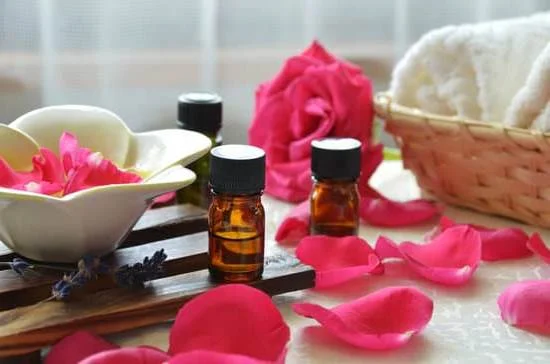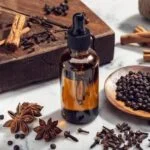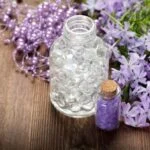Aromatherapy massage in hospice care is a therapeutic approach that combines the benefits of aromatherapy and massage to provide comfort and support to patients facing end-of-life challenges. Aromatherapy involves the use of essential oils derived from plants, which are known for their therapeutic properties. This practice has been extensively used in various cultures for centuries to promote physical, mental, and emotional well-being.
In the context of hospice care, aromatherapy massage serves as a complementary therapy that aims to alleviate symptoms associated with terminal illness, enhance relaxation, and improve overall quality of life. This gentle and soothing technique can provide much-needed relief from pain, anxiety, stress, and sleep disturbances commonly experienced by hospice patients.
The integration of aromatherapy massage into hospice care settings is gaining recognition due to its potential to enhance the holistic approach towards end-of-life care. By combining the power of touch with the healing properties of essential oils, this therapy addresses not only physical discomfort but also emotional and spiritual needs.
In the following sections, we will delve deeper into the role of aromatherapy massage in hospice care, explore its benefits for patients, discuss safety considerations, learn about different techniques used, share real-life success stories, and encourage readers to consider this complementary therapy option.
Understanding the Role of Aromatherapy Massage in Hospice Care
Aromatherapy massage is becoming increasingly popular in hospice care due to its ability to provide physical and emotional support to patients. This section will explore why aromatherapy massage is being integrated into hospice care plans and discuss how it can benefit patients in their end-of-life journey.
The Popularity of Aromatherapy Massage in Hospice Care
One of the reasons why aromatherapy massage has gained popularity in hospice care is its holistic approach to healing. Unlike traditional massages, which primarily focus on physical relief, aromatherapy massage combines the power of touch with the invigorating scents of essential oils. By addressing both the physical and psychological aspects of a patient’s well-being, this therapeutic combination offers comprehensive support during the end-of-life process.
Aromatherapy massage is also valued for its ability to alleviate pain and provide comfort to those facing terminal illnesses. Many hospice patients experience pain due to their conditions or various treatments they undergo. The gentle pressure applied during an aromatherapy massage combined with the analgesic properties of essential oils can effectively ease discomfort and promote a sense of relief.
Emotional Support through Aromatherapy Massage
In addition to physical benefits, aromatherapy massage can profoundly affect a patient’s emotional state during their time in hospice care. The relaxing and comforting scents emitted by essential oils trigger positive emotions and create an atmosphere conducive to healing. Patients often report feeling calmer, less anxious, and more at peace after receiving an aromatherapy massage.
Furthermore, aromatherapy massage can address emotional needs that arise as individuals navigate the end-of-life journey. It provides a safe space for patients to express their emotions and find solace through nurturing touch. The presence of a skilled therapist who understands their unique challenges can enhance trust-building between patients and their caregivers, fostering a supportive environment that promotes emotional healing.
Overall, the role of aromatherapy massage in hospice care goes beyond physical relief. It recognizes the importance of tending to patients’ emotional well-being while offering comfort and alleviating pain. By integrating this complementary therapy option into hospice care plans, healthcare providers can create a holistic approach that enhances end-of-life experiences for patients and their families.
Benefits of Aromatherapy Massage in Hospice Settings
Aromatherapy massage has been found to offer numerous benefits for patients in hospice settings. This section will explore the various advantages that aromatherapy massage can provide for hospice patients, including pain relief, anxiety reduction, improved quality of sleep, and enhanced overall well-being.
- Pain Relief: Aromatherapy massage has shown to be effective in managing pain for hospice patients. Essential oils such as lavender, chamomile, and peppermint have analgesic properties that can help alleviate discomfort. The gentle touch of massage combined with the soothing scents of these essential oils can create a relaxing environment and provide relief from physical pain.
- Anxiety Reduction: Anxiety is a common symptom experienced by hospice patients due to their illness and the uncertainty surrounding end-of-life care. Aromatherapy massage can help reduce anxiety levels by promoting relaxation and creating a sense of calm. Essential oils such as bergamot, frankincense, and ylang-ylang are known for their anxiety-relieving properties and can be incorporated into the massage session.
- Improved Quality of Sleep: Sleep disturbances are prevalent among individuals in hospice care. Aromatherapy massage can promote better sleep quality by inducing relaxation and reducing restlessness. Lavender essential oil is often used in aromatherapy massages for its sedative effects and ability to enhance sleep duration and quality.
- Enhanced Overall Well-being: Aromatherapy massage has a positive impact on the overall well-being of hospice patients. The combination of gentle touch, soothing scents, and emotional support provided during the massage session helps improve mood and emotional state. Essential oils such as citrus oils (e.g., orange, lemon) are known for their uplifting properties and can boost mood during the massage experience.
In summary, aromatherapy massage offers a range of benefits for patients in hospice settings. From pain relief to anxiety reduction and improved sleep quality, this complementary therapy can enhance the well-being of individuals receiving end-of-life care. By incorporating essential oils with specific therapeutic properties into the massage sessions, aromatherapy massage can provide holistic support for hospice patients, addressing their physical and emotional needs.
Essential Oils Used in Aromatherapy Massage for Hospice Patients
Aromatherapy massage for hospice patients involves the use of essential oils, which are highly concentrated plant extracts that possess therapeutic properties. These essential oils are carefully selected based on their specific properties and effects to enhance the well-being of patients in a hospice setting. Here is a comprehensive guide to some of the most commonly used essential oils in aromatherapy massage for hospice patients:
- Lavender Oil: Known for its calming and relaxing properties, lavender oil is often used to promote restful sleep and reduce anxiety. It also has pain-relieving qualities that can provide comfort to hospice patients.
- Peppermint Oil: Peppermint oil is commonly used for its invigorating and cooling effects. It can help alleviate headaches and nausea, which are common symptoms experienced by hospice patients.
- Chamomile Oil: Chamomile oil is renowned for its soothing properties, making it an excellent choice for reducing anxiety, promoting relaxation, and improving sleep quality.
- Eucalyptus Oil: With its refreshing scent, eucalyptus oil is often used in aromatherapy massage to ease respiratory issues, such as congestion and difficulty breathing.
- Frankincense Oil: Frankincense oil has been traditionally used for its grounding and uplifting effects. It can help alleviate depression and anxiety while promoting emotional balance.
- Rosemary Oil: Rosemary oil is known for its stimulating properties that can enhance mental clarity and improve memory retention. It can be beneficial for hospice patients experiencing cognitive decline or confusion.
- Ylang-Ylang Oil: Ylang-ylang oil has a sweet floral scent that is often used to promote relaxation, reduce stress, and uplift moods. It can be particularly helpful in managing feelings of sadness or grief in hospice patients.
8.Table Heading
Safety and Precautions in Aromatherapy Massage for Hospice Patients
The Importance of Safety Measures
In any healthcare setting, ensuring patient safety is of utmost importance. This holds true for aromatherapy massage in hospice care as well. While aromatherapy massage can provide numerous benefits to patients, it is important to take certain precautions and follow safety guidelines to minimize any potential risks. Safety measures include proper dilution of essential oils, conducting thorough assessments prior to the massage, and obtaining informed consent from patients.
Addressing Potential Contraindications
As with any therapeutic intervention, there may be specific contraindications for aromatherapy massage in some hospice patients. For example, individuals with certain medical conditions such as epilepsy or asthma may need to avoid specific essential oils that could trigger adverse reactions. It is crucial for therapists and hospice care teams to thoroughly assess each patient’s medical history and allergies before proceeding with aromatherapy massage.
Precautions for Patient Safety
To ensure patient safety during an aromatherapy massage session in a hospice setting, certain precautions need to be followed. These include avoiding the use of essential oils in close proximity to open wounds or broken skin, employing gentle pressure and techniques to prevent discomfort or injury, and closely monitoring patients for any signs of adverse reactions.
Implementing these safety measures and precautions can help create a safe and supportive environment for both the patients and the therapists involved in aromatherapy massage in hospice care. By carefully considering each individual’s unique needs and circumstances, the risk of adverse effects can be minimized while still providing the many potential benefits of this therapy.
Integrating Aromatherapy Massage into Hospice Care Plans
Aromatherapy massage is a valuable and effective complementary therapy that can be integrated into hospice care plans. By incorporating this holistic approach, hospice teams can provide additional physical and emotional support to patients during their end-of-life journey. Collaboration between the aromatherapist, hospice care team members, and the patient’s family ensures a comprehensive and personalized approach to care.
One effective way to integrate aromatherapy massage into hospice care plans is by creating an individualized treatment plan for each patient. This involves assessing the patient’s needs, preferences, and medical condition, as well as considering any contraindications or precautions. The aromatherapist can work closely with the hospice team to create a plan that addresses the specific symptoms and goals of each patient, such as pain management, anxiety reduction, or improvement in quality of sleep.
To ensure seamless integration of aromatherapy massage into hospice care plans, communication and collaboration between all parties involved is crucial. The hospice team should be informed about the benefits of aromatherapy massage and how it can enhance the overall well-being of patients. Regular meetings and updates between the aromatherapist and the hospice team allow for ongoing assessment of the effectiveness of the treatment plan and any necessary adjustments based on changes in the patient’s condition.
| Benefits | Description |
|---|---|
| Pain Relief | Aromatherapy massage has shown to reduce pain levels in hospice patients through its analgesic properties. |
| Anxiety Reduction | The gentle touch combined with inhalation of calming essential oils creates a sense of relaxation and peace, helping to alleviate anxiety in patients. |
| Improved Sleep | Essential oils like lavender and chamomile have sedative properties, promoting better quality sleep for hospice patients. |
| Enhanced Well-being | The therapeutic effects of aromatherapy massage can improve the overall well-being of hospice patients, providing comfort, emotional support, and a sense of connection. |
Aromatherapy Massage Techniques for Hospice Patients
Aromatherapy massage techniques play a crucial role in providing comfort and support to hospice patients. The gentle and soothing movements of aromatherapy massage can help alleviate pain, reduce anxiety, promote relaxation, and enhance overall well-being. In this section, we will explore different massage techniques that are commonly used in aromatherapy massage for hospice patients.
- Effleurage: This technique involves long, sweeping strokes with the palms of the hands, gliding over the skin in a gentle and rhythmic manner. Effleurage is typically used at the beginning and end of the massage session to help relax the patient and create a sense of connection.
- Petrissage: Petrissage refers to kneading and lifting movements using the fingertips or palms of the hands. This technique helps improve circulation, relieve muscle tension, and stimulate lymphatic flow. It is usually applied to larger muscle groups such as the back or shoulders.
- Friction: Friction involves deep pressure applied to specific areas using circular or linear movements with the fingers or thumbs. This technique targets knots or tight spots in muscles, promoting relaxation and relieving pain.
- Compression: Compression is performed by applying steady pressure with either open hands or fingertips onto specific points on the body. This technique can help release tension, promote relaxation, and improve blood flow.
- Lymphatic Drainage: This gentle technique uses very light pressure and rhythmic movements to stimulate lymphatic flow throughout the body. It can help reduce edema (swelling), detoxify tissues, and boost immune function.
It’s important to note that each patient’s needs may vary, so these techniques should be adapted according to their individual preferences and tolerance levels. Aromatherapy massage therapists working in hospice care should always prioritize patient comfort and adjust their techniques accordingly.
By incorporating these various aromatherapy massage techniques into hospice care plans, healthcare providers can offer patients a holistic approach to managing their symptoms. These techniques not only provide physical relief but also contribute to emotional and spiritual support, promoting a sense of peace and comfort during end-of-life care.
Real-Life Hospice Success Stories with Aromatherapy Massage
Aromatherapy massage has shown remarkable success in enhancing the well-being of hospice patients, providing them with comfort and relief. Numerous real-life success stories highlight the positive impact of aromatherapy massage in hospice care, creating a transformative experience for both the patients and their families.
One such success story involves a hospice patient named Sarah. Sarah was experiencing significant pain and anxiety due to her terminal illness, making it challenging for her to find relief. The introduction of aromatherapy massage into her care plan brought about a profound change in her overall well-being.
The gentle touch combined with the inhalation of soothing essential oils provided Sarah with physical and emotional relaxation, alleviating her pain and reducing anxiety levels. Her family also noticed that she became more peaceful and content during and after every session of aromatherapy massage.
Another inspiring success story is that of John, who had been struggling with sleep disturbances throughout his end-of-life journey. Aromatherapy massage played a pivotal role in improving his quality of sleep and promoting a sense of calmness before bedtime.
By using lavender essential oil during his massages, John experienced a significant reduction in restlessness at night, allowing him to have more restful sleep. This improvement in his sleep pattern had an immediate positive effect on his energy levels during the day and enhanced his overall quality of life.
These real-life success stories demonstrate the power of aromatherapy massage as an effective complementary therapy in hospice care. It not only provides physical relief but also addresses emotional needs, empowering patients to reclaim control over their well-being during their final days. The combination of therapeutic touch and the aromatic properties of essential oils creates a holistic experience that brings comfort, peace, and a renewed sense of tranquility to hospice patients.
As more healthcare providers recognize the value of integrative approaches in palliative care, these success stories serve as a testament to the potential benefits of aromatherapy massage for hospice patients. By incorporating this therapy into their care plans, hospice teams can positively impact the lives of their patients, offering them comfort and solace during their end-of-life journey.
The power of touch and the healing properties of essential oils have the ability to transform the palliative care experience by providing a supportive and nurturing environment for both patients and their families.
Conclusion
In conclusion, aromatherapy massage has proven to be a valuable and effective complementary therapy in hospice care. Throughout this article, we have explored the benefits of aromatherapy massage for hospice patients and discussed the various ways it can provide physical and emotional support. From relieving pain to reducing anxiety, improving sleep quality to enhancing overall well-being, aromatherapy massage has shown its potential to significantly improve the lives of those in hospice settings.
Furthermore, we have provided a comprehensive guide to the essential oils commonly used in aromatherapy massage for hospice patients, emphasizing their properties, effects, and specific uses in this context. We also addressed the importance of safety measures and precautions to ensure patient well-being when incorporating aromatherapy massage into hospice care plans.
Aromatherapy massage can be seamlessly integrated into existing hospice care plans, offering a holistic approach that promotes healing and comfort. By collaborating with hospice care teams and using gentle and soothing techniques, practitioners can create an environment that fosters relaxation and peace for both patients and their families.
In closing, exploring the potential benefits of aromatherapy massage in hospice settings is worth considering for anyone involved in caring for individuals at end-of-life stages. Its healing power has been witnessed by numerous patients, families, and caregivers who have experienced positive outcomes from this therapy.
As we strive to enhance the quality of life for those facing terminal illnesses, let us not overlook the significant impact that aromatherapy massage can have as a complementary therapy option in hospice care.
Frequently Asked Questions
What is the purpose of aromatherapy massage?
The purpose of aromatherapy massage is to combine the therapeutic benefits of touch and essential oils in order to promote relaxation, reduce stress, and enhance overall well-being. Aromatherapy involves the use of fragrant essential oils derived from plants, which are added to a carrier oil and applied to the body through massage techniques.
These essential oils are believed to have specific properties that can positively affect mood, emotions, and physical health. The aim of an aromatherapy massage is to create a soothing and nurturing experience that addresses both the physical and emotional needs of an individual.
Why is aromatherapy good for hospice patients?
Aromatherapy is particularly beneficial for hospice patients for several reasons. Firstly, it offers a gentle and non-invasive approach to promoting comfort and relaxation during the end-of-life stage. The fragrance of essential oils can help create a soothing environment by masking any unpleasant odors associated with illness or medical treatments.
Aromatherapy has been shown to alleviate anxiety, depression, sleep disturbances, and pain in hospice patients, improving their overall quality of life. Additionally, engaging multiple senses through aromatherapy can provide sensory stimulation that can be comforting for those who may be confined to bed or experiencing cognitive decline.
What essential oils are good for end of life?
When it comes to end-of-life care, there are several essential oils that are commonly used due to their calming properties and potential benefits in supporting emotional well-being. Lavender oil is often chosen for its ability to promote relaxation, ease anxiety, and improve sleep quality. Frankincense oil is valued for its ability to induce feelings of peace and spirituality while also aiding respiratory function.
Peppermint oil may be used in small doses as it can help alleviate nausea or discomfort associated with digestive issues or medication side effects experienced by some hospice patients. Geranium oil is another option known for its balancing properties that can support emotional stability during this difficult time. It’s important to note that essential oils should be used under the guidance of a trained aromatherapist or healthcare professional familiar with hospice care, as their proper application and dosage can vary depending on individual needs and conditions.

Are you looking for a natural way to improve your health and wellbeing?
If so, aromatherapy may be the answer for you.





